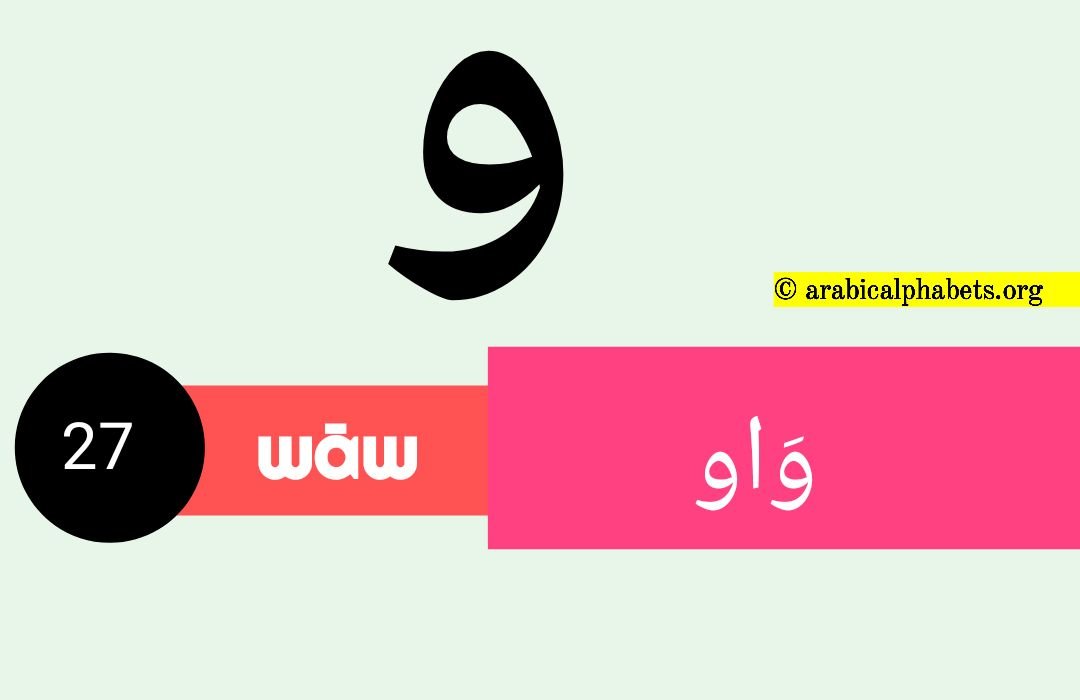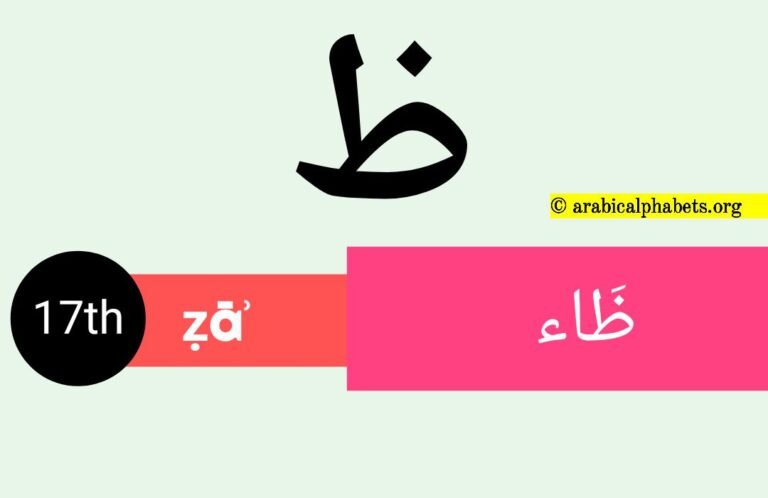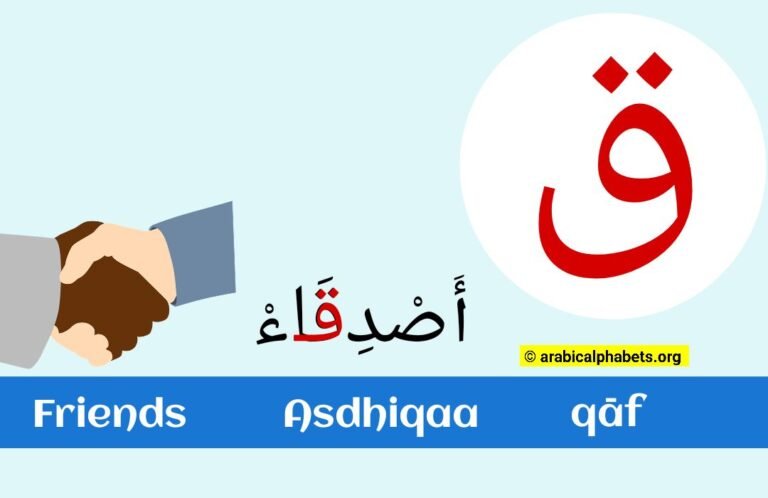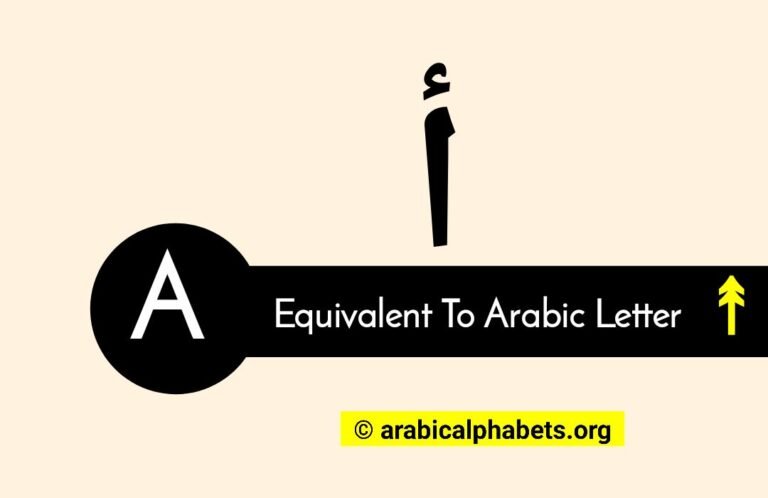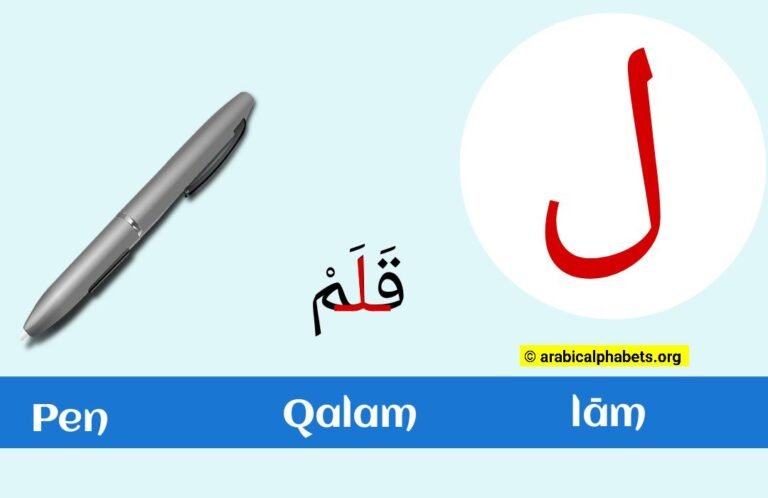Twenty-seven Arabic Alphabet Letter
Are you searching for the 27th letter of the Arabic alphabet? Get the answer with the photo; not only this, but you will get the complete order here.
The Arabic alphabet, with its elegant and flowing script, is a symbol of beauty and sophistication. Comprising twenty-seven letters, it has been used for centuries to write Arabic and is also widely utilized in other languages such as Persian, Urdu, and Kurdish. However, there needs to be more clarity regarding the order of these letters.
While most people know the twenty-seven-letter alphabet, did you know there are twenty-eight letters? This article will delve into the fascinating history behind the Arabic alphabet and reveal the often-overlooked twenty-eighth letter that completes this exquisite linguistic puzzle.
Twenty-seven Arabic Alphabet Letter Full Details Here
Table Description -> A – Serial Number, B – Isolated Form, C – Trans-literation, D – Letter name, E – Letter Name In Arabic Script.
| A | B | C | D | E |
|---|---|---|---|---|
| 27 | و | w | wāw | وَاو |
Welcome to a comprehensive exploration of the twenty-seventh letter of the Arabic alphabet, “Wāw” (و). This guide will delve into its pronunciation, written form, role in word formation, and cultural significance within the Arabic language. Join us as we uncover the nuances of “Wāw”:
1. Introduction to “Wāw” (و):
“Wāw” is the twenty-seventh letter in the Arabic alphabet, contributing its distinct sound and form to the language.
2. Mastering Pronunciation:
Achieve accurate pronunciation of “Wāw,” producing a rounded “w” sound that distinguishes it from other letters.
3. Written Form of “Wāw” (و):
Appreciate the visual elegance of the written form of “Wāw,” resembling the English letter “w” while retaining its Arabic identity.
4. Word Formation Role:
Uncover how “Wāw” collaborates with other letters to create words, which is crucial in constructing a meaningful vocabulary.
5. Expanding Vocabulary:
Immerse yourself in Arabic vocabulary by exploring words containing “Wāw,” such as “وردة” (flower), “وقت” (time), and “وجه” (face).
6. Influence on Arabic Grammar:
Understand the grammatical significance of “Wāw” in sentence structure, verb conjugations, and conjunctions.
7. Cultural Significance and Expressions:
Explore the cultural context of “Wāw” within expressions, idiomatic phrases, and everyday language, reflecting regional diversity.
8. Aesthetic in Calligraphy:
Observe “Wāw” in Arabic calligraphy, whose form lends itself to artistic interpretations across various calligraphic styles.
9. Developing Writing Skills:
Practice writing “Wāw” in isolation and within words, refining your handwriting to replicate its form accurately.
10. Mnemonics and Memory Techniques:
Utilize memory-enhancing techniques to facilitate the memorization of “Wāw.” Create associations or visual aids for retention.
11. Enhancing Reading Abilities:
Witness how “Wāw” combines with other letters to form words—progress in reading by recognizing it in diverse textual contexts.
12. Continuation of Learning:
Discover the logical next steps in your Arabic journey after mastering “Wāw,” including advancing to more complex language skills.
13. Enrichment through Cultural Insights:
By mastering “Wāw,” you’re immersing yourself in Arabic-speaking communities’ cultural and linguistic tapestry.
14. Practical Application and Fluency:
Equip yourself with foundational skills to confidently engage in reading, writing, and conversations using “Wāw” and other Arabic letters.
Embark on this journey of enthusiastically uncovering the Arabic letter “Wāw” (و). As you explore its intricacies, you’re forging a path toward effective communication and a profound understanding of the depth and beauty of the Arabic language.
Get 1 to 28 Arabic Letters Order
Table Description -> A – Serial Number, B – Isolated Form, C – Trans-literation, D – Letter name, E – Letter Name In Arabic Script.
| A | B | C | D | E |
|---|---|---|---|---|
| 1 | ا | ā | ʾalif | أَلِف |
| 2 | ب | b | bāʾ | بَاء |
| 3 | ت | t | tāʾ | تَاء |
| 4 | ث | th | thāʾ | ثَاء |
| 5 | ج | j | jīm | جِيم |
| 6 | ح | ḥ | ḥāʾ | حَاء |
| 7 | خ | kh | khāʾ | خَاء |
| 8 | د | d | dāl | دَال |
| 9 | ذ | dh | dhāl | ذَال |
| 10 | ر | r | rāʾ | رَاء |
| 11 | ز | z | zāy | زَاي |
| 12 | س | s | sīn | سِين |
| 13 | ش | sh | shīn | شِين |
| 14 | ص | ṣ | ṣād | صَاد |
| 15 | ض | ḍ | ḍād | ضَاد |
| 16 | ط | ṭ | ṭāʾ | طَاء |
| 17 | ظ | ẓ | ẓāʾ | ظَاء |
| 18 | ع | ʿ | ayn | عَيْن |
| 19 | غ | gh | ghayn | غَيْن |
| 20 | ف | f | fāʾ | فَاء |
| 21 | ق | q | qāf | قَاف |
| 22 | ك | k | kāf | كَاف |
| 23 | ل | l | lām | لاَم |
| 24 | م | m | mīm | مِيم |
| 25 | ن | n | nūn | نُون |
| 26 | ه | h | hāʾ | هَاء |
| 27 | و | w | wāw | وَاو |
| 28 | ي | y | yāʾ | يَاء |
Embarking on a Beginner’s Adventure in Arabic Letters: Learn Alphabets Step by Step
Welcome to “A Beginner’s Adventure in Arabic Letters: Learn Alphabets Step by Step.” This guide is your passport to the captivating world of the Arabic alphabet, designed to make your learning journey engaging and seamless. Join us as we navigate through the intricacies of Arabic letters with a step-by-step approach:
1. Introduction to Arabic Letters:
Embark on a thrilling adventure through Arabic letters, laying the foundation for your language exploration.
2. Progressive Learning Path:
Follow a well-structured path, starting from the fundamental letters and progressing to more complex forms.
3. Mastering Pronunciation:
Perfect your pronunciation skills with audio guides, ensuring you articulate each letter accurately.
4. Visual Recognition of Letters:
Train your eyes to recognize Arabic letters in different contexts, setting the stage for fluid reading and writing.
5. Building Vocabulary:
Expand your vocabulary by discovering words associated with each letter, creating a solid linguistic foundation.
6. Cultural Insights and Significance:
Explore the cultural and historical significance of each letter, connecting you to the cultural heritage of the Arab world.
7. Developing Writing Skills:
Practice writing each letter meticulously, honing your penmanship for confident communication.
8. Effective Memorization Techniques:
Leverage memory techniques and interactive exercises to enhance your recall and retention of Arabic letters.
9. Forming Simple Words:
Witness the magic of combining letters to create basic words, bridging theory, and real-world language use.
10. Engaging Learning Activities:
Participate in interactive activities that make learning Arabic letters an enjoyable and immersive experience.
11. Visual Aids and Learning Resources:
Utilize visual aids, diagrams, and downloadable resources tailored to various learning styles.
12. Progressing Beyond Alphabets:
Discover the logical steps after mastering Arabic letters, including reading, writing, and conversational proficiency.
13. Cultural Enrichment through Language:
By learning Arabic letters, you’re immersing yourself in Arabic-speaking communities’ cultural tapestry and linguistic richness.
14. Practical Language Application:
Equip yourself with foundational skills to confidently read, write, and communicate using Arabic letters.
Join us on this beginner’s adventure in Arabic letters, where learning becomes a dynamic and enjoyable experience. As you progress through each step, you’re building a strong foundation for effective communication and establishing a deeper connection with the fascinating world of the Arabic language.
Conclusion Points
In conclusion, our comprehensive exploration of the twenty-seventh Arabic alphabet letter, “Wāw” (و), has illuminated its vital role within the Arabic language. Through an in-depth examination of its pronunciation, written form, grammatical implications, and cultural connections, we have gained a profound appreciation for the significance of “Wāw” in shaping Arabic communication.
As you continue mastering Arabic, remember that each letter, including “Wāw,” contributes to the rich tapestry of language and culture. Embrace the elegance of “Wāw” as it links you to cultural expressions, linguistic intricacies, and the broader Arabic-speaking community. With each letter conquered, you’re taking confident steps towards effective communication and a deeper connection with the complexities and beauty of the Arabic language.
Ten frequently asked questions (FAQs) about the twenty-seventh Arabic alphabet letter, “Wāw” (و):
Where does “Wāw” (و) stand in the Arabic alphabet?
“Wāw” is the twenty-seventh letter in the Arabic alphabet.
How is “Wāw” (و) pronounced?
“Wāw” is pronounced as a rounded “w” sound, distinct from other letters.
Describe the written form of “Wāw” (و).
The written form of “Wāw” resembles the English letter “w” but maintains its unique shape within the Arabic script.
How does “Wāw” (و) contribute to word formation?
“Wāw” combines with other letters to create words, adding to vocabulary diversity.
Can you provide examples of words with “Wāw” (و)?
Certainly! Examples include “وردة” (flower), “وقت” (time), and “وجه” (face).
In what ways does “Wāw” (و) influence Arabic grammar?
“Wāw” plays a role in sentence structure, verb conjugations, and connecting words within sentences.
Are there cultural expressions associated with “Wāw” (و)?
Explore how “Wāw” appears in idioms, expressions, and colloquial language, reflecting cultural nuances.
Does “Wāw” (و) have significance in Arabic calligraphy?
Yes, the distinct shape of “Wāw” lends itself to artistic interpretations in Arabic calligraphy.
How can I improve my writing and recognition of “Wāw” (و)?
Regular practice in writing “Wāw,” both independently and within words, enhances your ability to identify and reproduce it correctly.
After mastering “Wāw” (و) in my Arabic learning journey, what’s the next step?
After mastering “Wāw,” you’re well-prepared to advance to more complex language skills, such as reading, writing, and conversational proficiency.
These FAQs provide insights into the Arabic letter “Wāw” (و). By understanding its attributes, you’re making meaningful strides towards enhancing your grasp of Arabic and immersing yourself in its rich cultural heritage.
